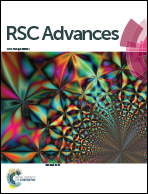Strongly anisotropic thermal and electrical conductivities of a self-assembled silver nanowire network
Abstract
Heat dissipation issues are emerging challenges in the field of flexible electronics. Thermal management of flexible electronics creates a demand for flexible materials with highly anisotropic thermal conductivity, which work as heat spreaders to remove excess heat in the in-plane direction and as heat shields to protect human skin or device components under them from heating. To solve these challenges, this study proposes a self-assembled silver nanowire network with high thermal and electrical anisotropy. We measured the in-plane thermal conductivity of the network along the axial direction of silver nanowires as 37 W m−1 K−1 and the cross-plane thermal conductivity as only 0.36 W m−1 K−1. The results of measurements of electrical and thermal conductivities suggest that abundant wire–wire contacts strongly impede thermal transport. The excellent alignment of nanowires results in the same anisotropy ratio of three for both thermal and electrical conduction in the two in-plane directions. The ratio remains unchanged as the temperature decreases to 50 K, indicating that wire–wire contacts lower the thermal and electrical conduction in the two directions to the same extent, and their effect is independent of temperature. In addition, phonon softening markedly reduces the Debye temperatures of the network, which are fitted from electrical resistivity data. As a result of phonon thermal conduction and localized phonon assisted energy transfer near boundaries, the Lorenz numbers of the film in the two directions, which are approximately the same, are larger than the Sommerfeld value at room temperature and decrease as the temperature decreases because of small angle scattering and the reduced number of phonons. This nanowire network provides a candidate solution to the emerging challenges of the thermal management of flexible electronics.



 Please wait while we load your content...
Please wait while we load your content...